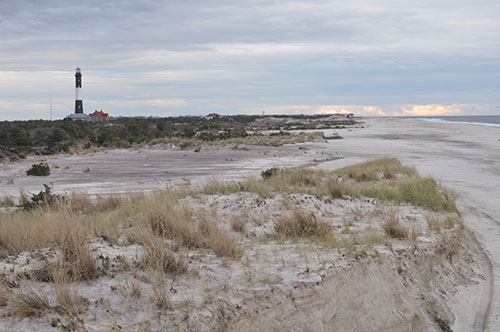Data Series 931
| AbstractIn response to the forecasted impact of Hurricane Sandy, which made landfall on October 29, 2012, the U.S. Geological Survey (USGS) began a substantial data-collection effort to assess the morphological impacts to the beach and dune system at Fire Island, New York. Global positioning system (GPS) field surveys of the beach and dunes were conducted just prior to and after landfall and these data were used to quantify change in several focus areas. In order to quantify morphologic change along the entire length of the island, pre-storm (May 2012) and post-storm (November 2012) lidar and aerial photography were used to assess changes to the shoreline and beach. As part of the USGS Hurricane Sandy Supplemental Fire Island Study, the beach is monitored periodically to enable better understanding of post-Sandy recovery. The alongshore state of the beach is recorded using a differential global positioning system (DGPS) to collect data around the mean high water (MHW; 0.46 meter North American Vertical Datum of 1988) to derive a shoreline, and the cross-shore response and recovery are measured along a series of 10 profiles. Overall, Hurricane Sandy substantially altered the morphology of Fire Island. However, the coastal system rapidly began to recover after the 2012-13 winter storm season and continues to recover in the form of volume gains and shoreline adjustment.  Fire Island lighthouse, post hurricane Sandy. Previously high (10 m) dunes in front of the lighthouse were completely overwashed during the storm. [larger version] Suggested CitationHenderson (Hehre), R.E., Hapke, C.J., Brenner, O.T., and Reynolds, B.J., 2016, Hurricane Sandy shoreline response and recovery at Fire Island, New York—Shoreline and beach profile data, October 2012 to October 2014 (ver. 2.0, September 2016): U.S. Geological Survey Data Series 931, https://dx.doi.org/10.3133/ds931. Contact
St. Petersburg Coastal and Marine Science Center |